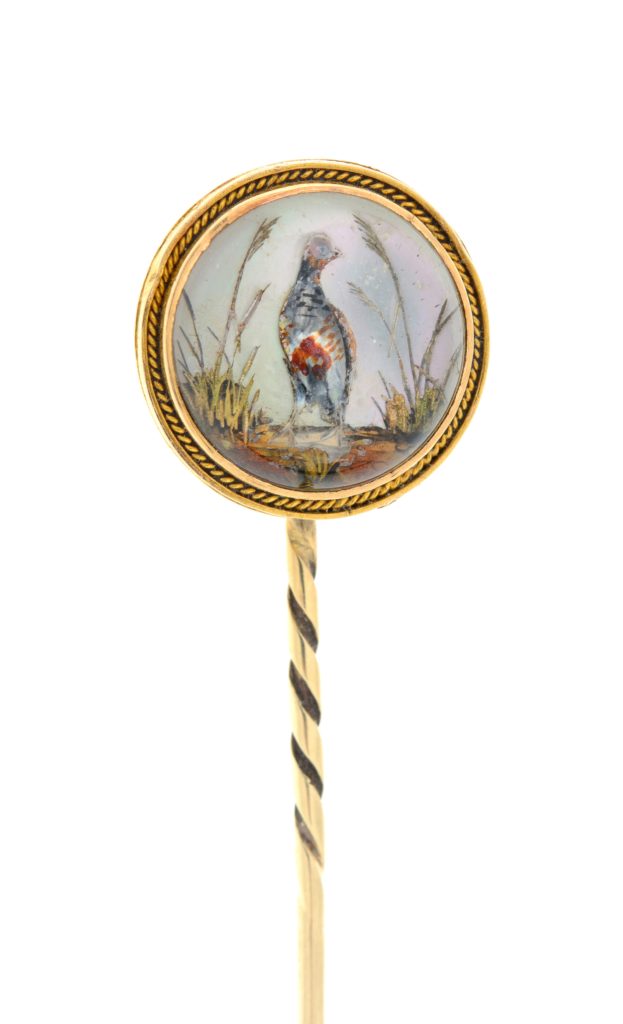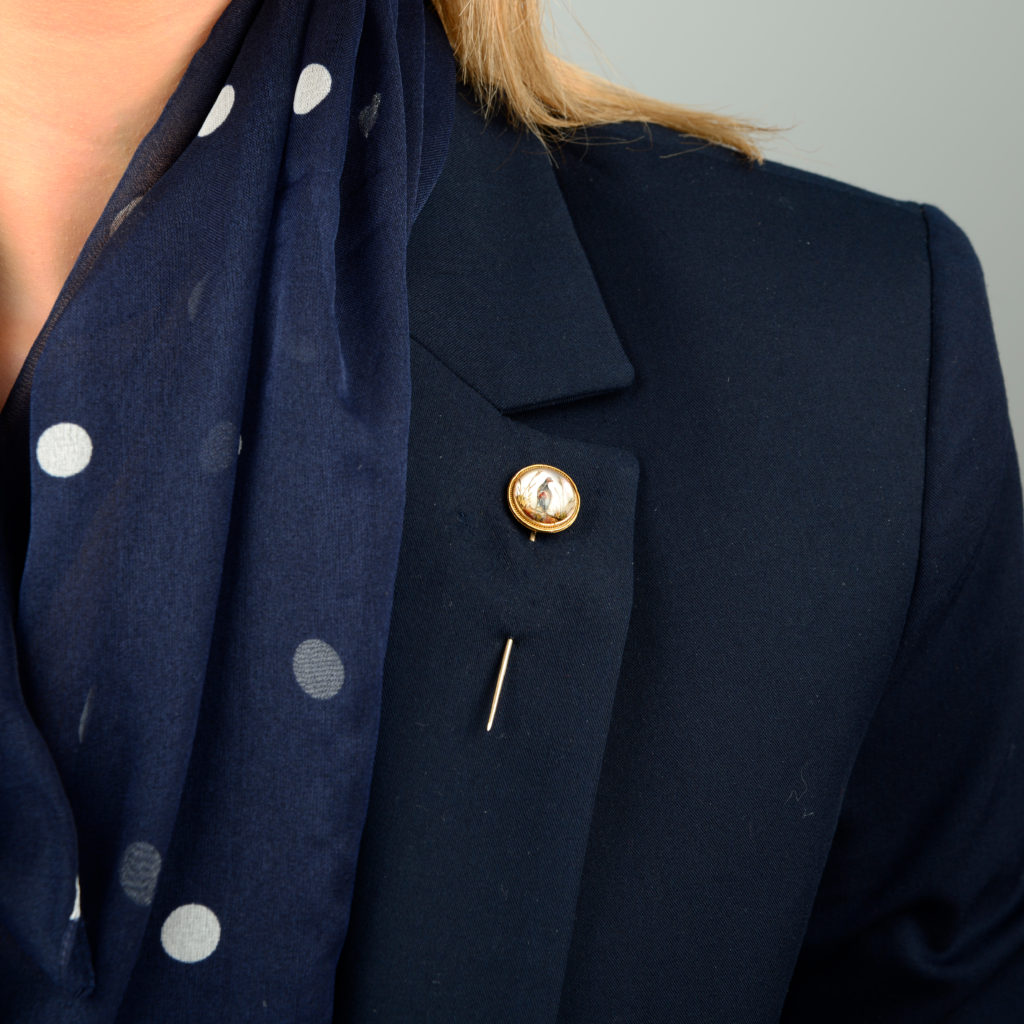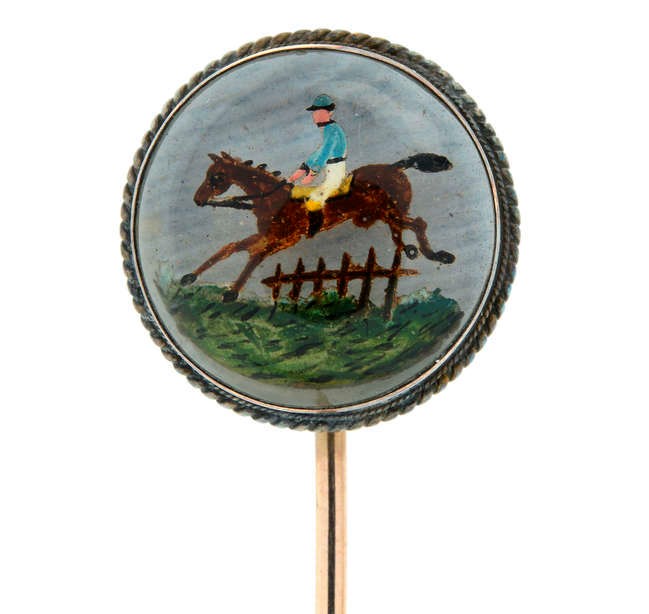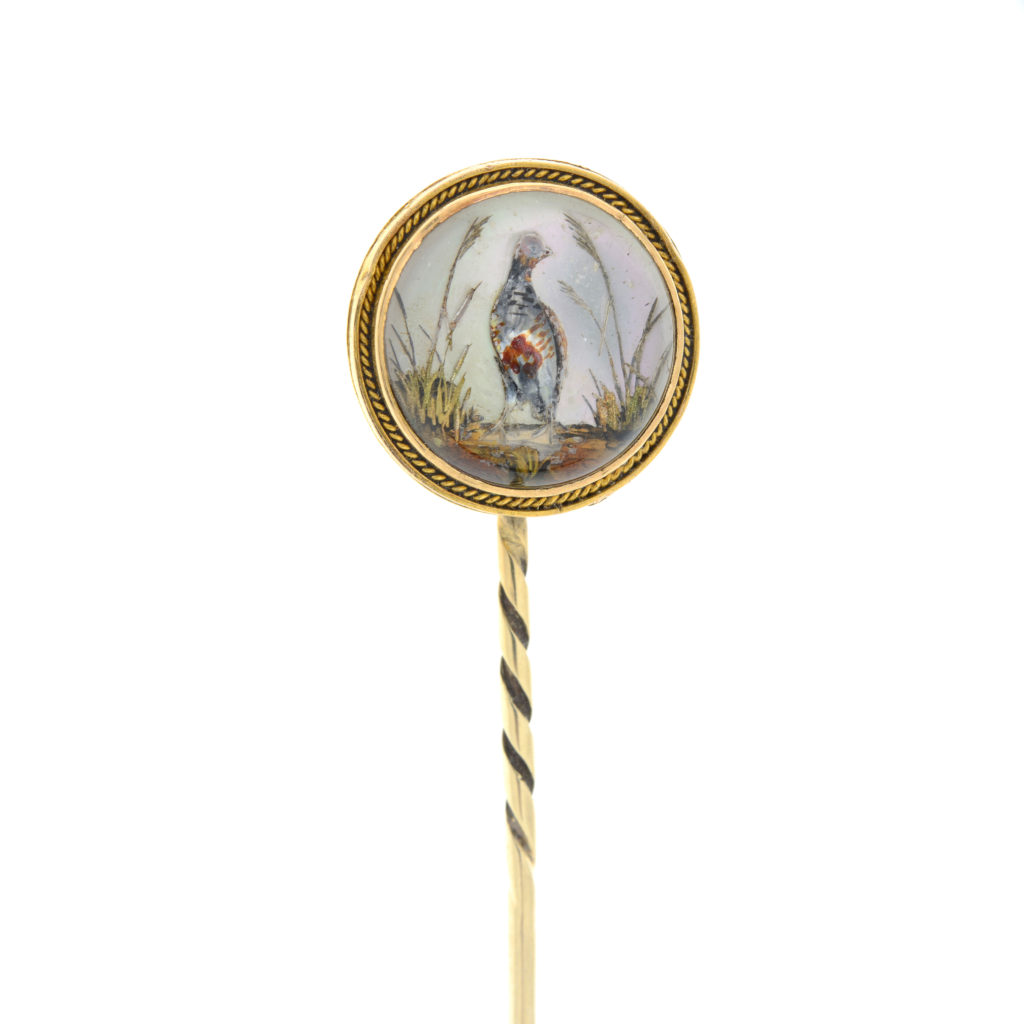
Our Fine Jewellery auction on August 24th will feature a charming stick pin showcasing a game bird. You can choose if you see a pheasant, partridge, ptarmigan, or grouse. Regardless of your preference, the pin is exquisitely crafted and visually appealing. It's a perfect addition to any collection.
Stick pins such as these first became popular in the 1800s. They were used to secure cravats made out of delicate materials such as silk or satin. As these fabrics were so fine and expensive, a stick pin became necessary to keep them in place.
They continued in popularity although production began to wain in the mid-20th century. In the 1920s, straight tie-pins overtook the traditional style, however, you can still find charming examples such as this in many of our jewellery auctions.
This pin is especially exciting, as not only is its Essex crystal top expertly crafted, but it has a fantastic origin story!
Essex Crystal
The term "Essex crystal" refers to a particular method of carving an image on the back of a rock crystal cabochon and then painting it. This technique is also referred to as a "reverse intaglio". It takes advantage of the crystal's magnifying properties to give the painting dimension and depth. Items such as our stick pin utilised this method to bring the image to life. Because of this technique, the image becomes almost three-dimensional. Instead of only being able to see the full image when viewing it from straight on, the image can be viewed from all angles while maintaining its depth and detail.

The origins of this technique, and the story of the person who developed it - are pretty much unknown. Every source seems to give slightly different variations. What is abundantly clear, however, is that Essex crystal grew in popularity in the Victorian period. During the second part of the 19th century, Essex crystal was especially desirable. Traditionally a very British craft, many pieces that you'll find today were made in England. The artists and engravers who worked at this craft are mostly anonymous, but their work speaks volumes about their craftsmanship and their eye for detail.
The Stick Pin - A Gift From George V
While popular in Victorian England, Essex crystal continued to be produced in the early 20th century. Subjects were often associated with the natural world; flowers, animals, plants etc., and some featured sporting images such as lot 237 in our jewellery auction just gone.

A late Victorian Essex crystal stick pin depicting a horse riding scene.
Price Realised: £130
![A box for a stick pin with a note reading: 'Presented to Major Werlham Wentworth [Suffolk] by King George V "for a splendid days shooting" 193[4]'.](/wp-content/uploads/2023/08/148157-3.cropped-1024x1024.jpg)
You might be asking - isn't it a bit excessive to have a blog dedicated to one stick pin? And normally I would agree with you. There is plenty of Essex crystal and plenty of stick pins on the market, so what makes this one so special? Well, aside from it being particularly sweet, our stick pin was once actually a gift from King George V.
In the box with the stick pin, there is a note reading:
'Presented to Major Werlham Wentworth [Suffolk] by King George V "for a splendid days shooting" 193[4]'
The King was well known for being a lover of shooting with a keen eye for aim. He would often hold shooting events at Sandringham for him and his friends, seemingly a tradition passed onto him from his father, Edward VII, who would also often take him out shooting in the countryside.
It is unclear who Werlham Wentworth was, but as he was invited to one of these exclusive events and was awarded this pin, it's safe to assume he would have been a close friend of the King.
Our stick pin comes from Garrard & Co, a company frequently hired to produce jewellery for the Royal Family. They were also the makers of Diana's engagement ring, which adds to the pin's intrigue.
The Stick Pin at Auction
This stick pin would be a brilliant addition to any collection. Whether in a hat, tie, or lapel, it is certainly charming and would bring an air of the countryside to any outfit.













